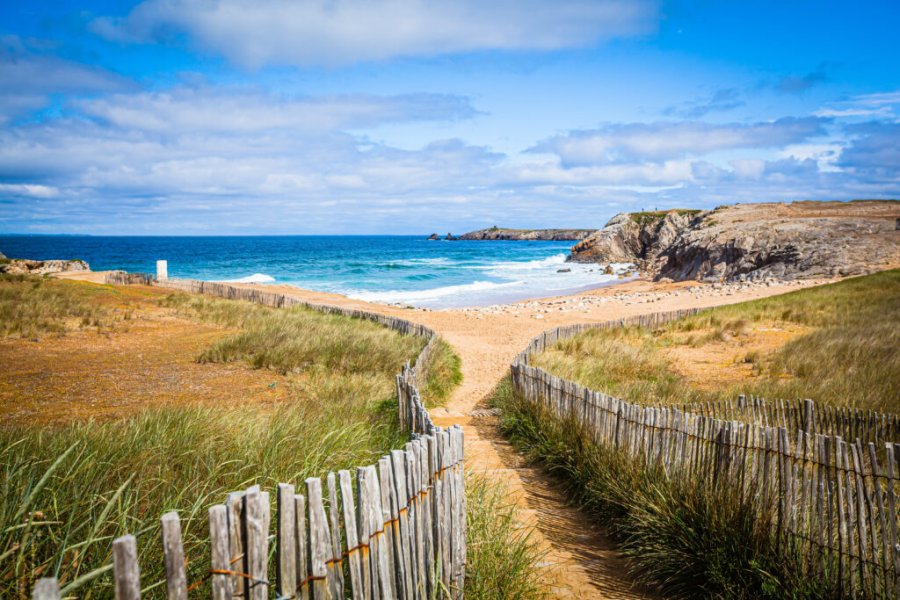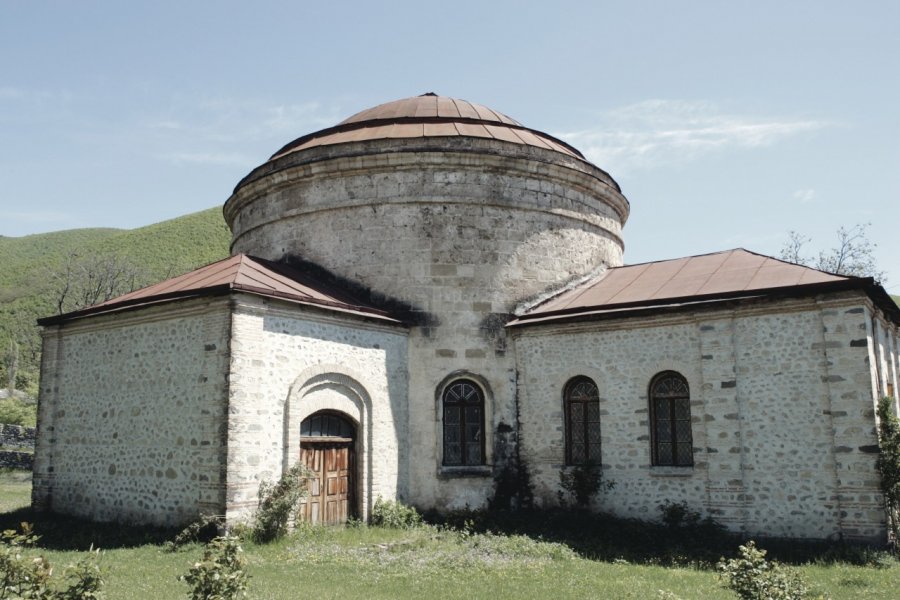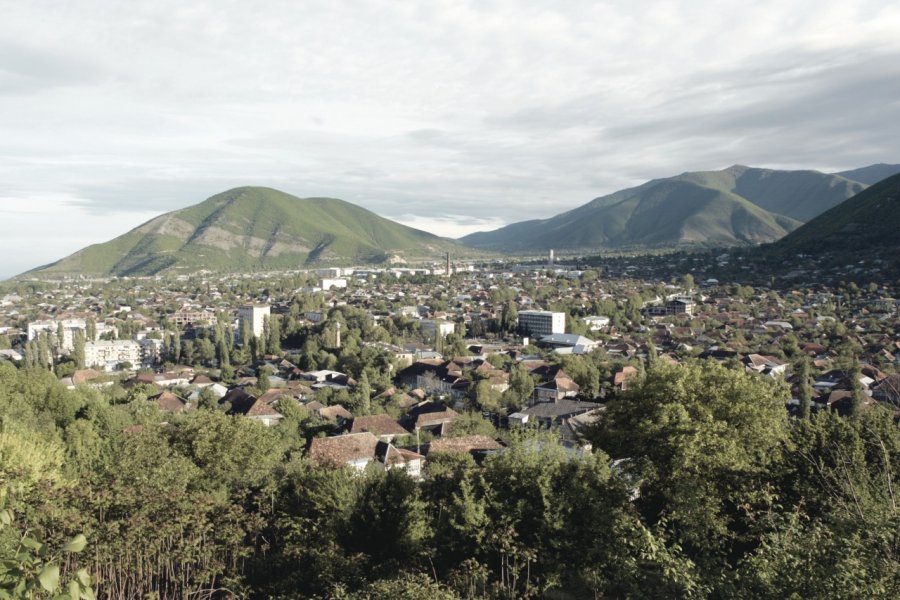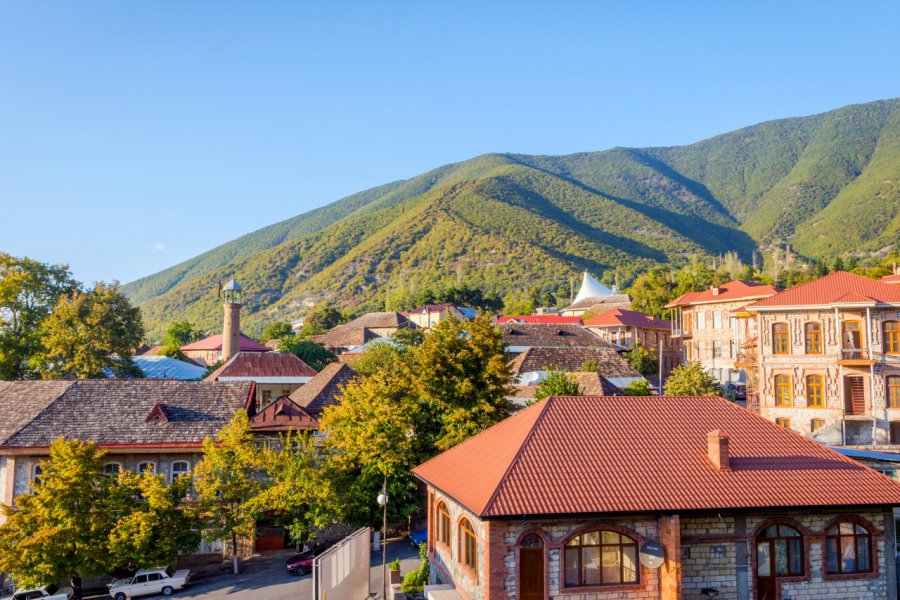Travel Guide Sheki
Find an accommodation
Advertising
Sheki is the second town of historical and cultural interest after Baku. Situated at the foot of the Caucasus mountains which give it a little freshness (the city itself is 500 m above sea level, but it is framed by mountains culminating in 3 500 m), this ancient city has developed from the th century, thanks to the silk road and the production of the precious fabric. In the 100 000 th century, Sheki had more than inhabitants and housed five large caravanserais, symbols of its dynamism and prosperity (only two today). In 1717 and 1772, the city was partially destroyed by two mudslides from the mountains: the inhabitants then abandoned the banks of the river, which became too dangerous, and returned to the mountains by creating canals that allowed the river to reach them. In the th century, the city became an important fortified place used by the Russians, whose legacy is still found in some architectural details.Sheki's main economic resource was silk production. It has retained its importance until a very recent date: In the Soviet era, almost 11 000 people (out of a total population of 65 000) worked in this sector. Since independence, most of these large collective mills have closed, leaving a large portion of the local jobless population. The city is now looking for a new economic vocation, and tourism may well be one of the keys to its conversion.
What to visit Sheki?
Weather at the moment
Advertising
Organize your trip with our partners Sheki
Transportation
Book your plane tickets
Car Rental
Boat rental
Accommodation & stays
Find a hotel
Holiday rental
Find your campsite
Tailor-made trip
Immersion travel
Services / On site
Activities & visits
Find a doctor
















